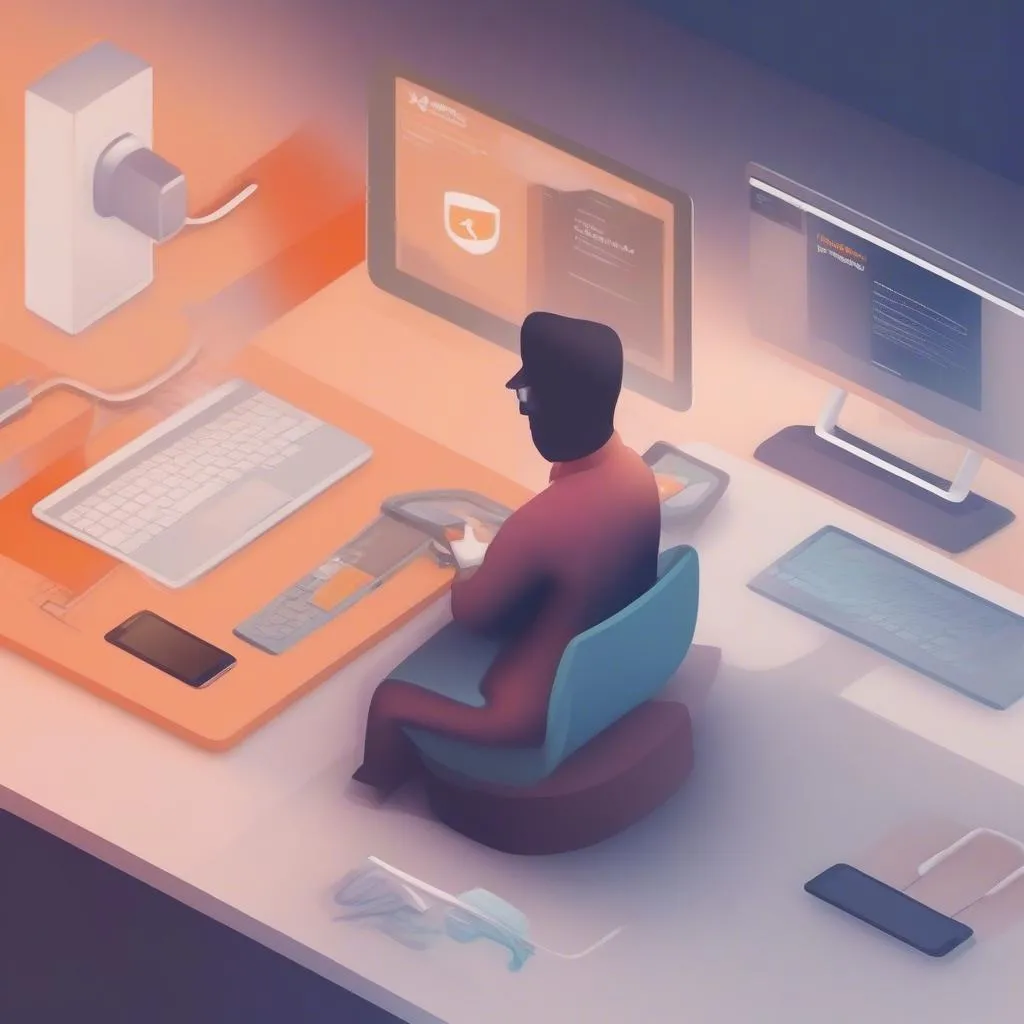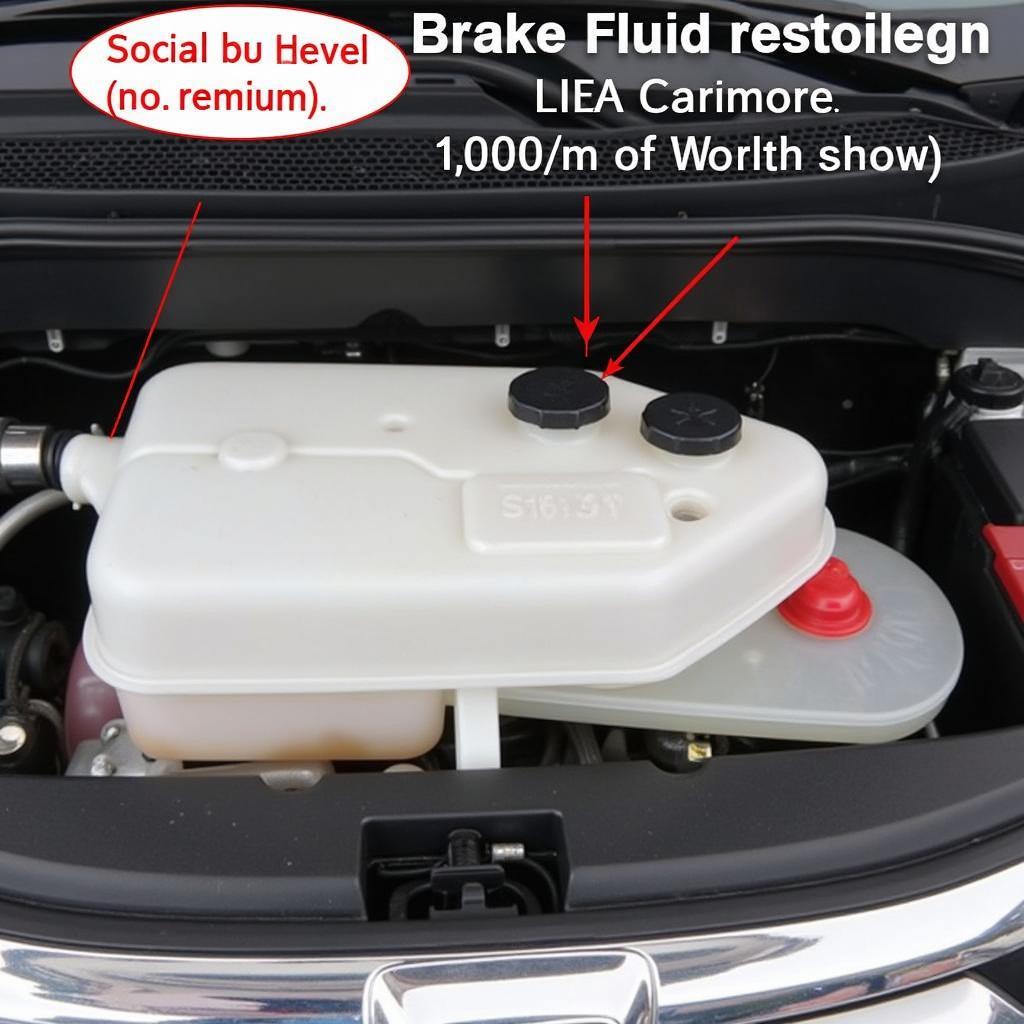That annoying little light on your dashboard is telling you something: your brake pads are wearing thin. But how long can you drive with the brake pad warning light on? The answer isn’t a simple one-size-fits-all. Let’s dive into the specifics and get you safely back on the road.
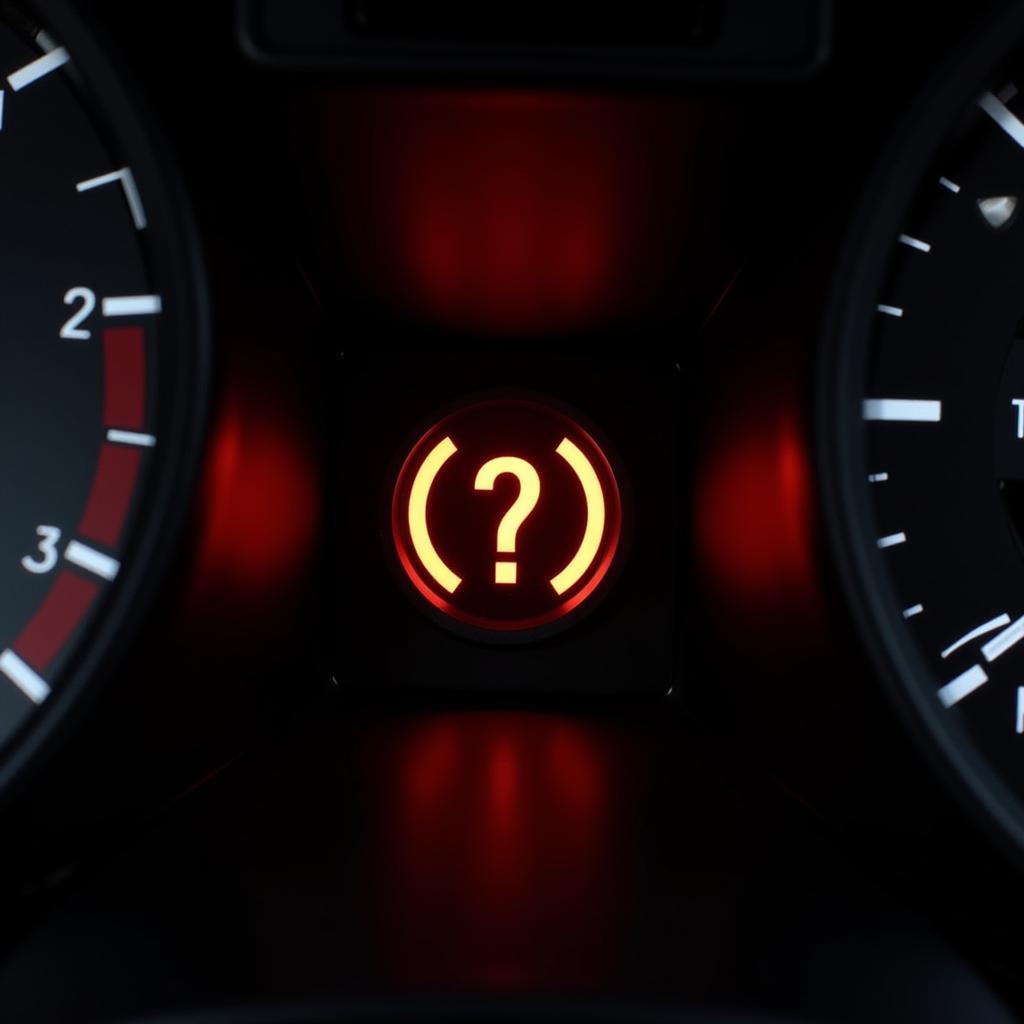 Brake Pad Warning Light Illuminated on Car Dashboard
Brake Pad Warning Light Illuminated on Car Dashboard
Understanding the Brake Pad Warning Light
The brake pad warning light is your car’s way of saying, “Hey, my brakes need attention!” It’s triggered by a small sensor embedded within the brake pad material. When the pad wears down to a certain point, this sensor makes contact with the rotor, completing a circuit and illuminating the warning light. This typically means your brake pads are nearing the end of their lifespan and require replacement. Ignoring this warning can lead to more extensive and costly repairs down the road. Looking for an adapter for your iPhone? Check out this iPhone Bluetooth car radio adapter.
How Long Can I Drive with the Light On?
While there’s no magic number, driving with the brake pad warning light illuminated is risky. You could have anywhere from a few hundred miles to just a few stops left before your brake pads are completely worn. Continuing to drive with worn brake pads can damage your rotors, calipers, and other brake components, significantly increasing repair costs.
Factors Affecting Brake Pad Lifespan
Several factors influence how long your brake pads last. Driving habits, road conditions, and even the type of brake pads you have all play a role.
- Driving Style: Aggressive driving with frequent hard braking will wear down your brake pads much faster than gentle, gradual braking. City driving with frequent stops and starts also contributes to faster wear.
- Road Conditions: Stop-and-go traffic, hilly terrain, and driving on rough roads can accelerate brake pad wear.
- Brake Pad Material: Different brake pad materials have varying lifespans. High-performance brake pads, for instance, may offer superior stopping power but wear out quicker than standard pads. Consider a smartphone Bluetooth car radio for safer, hands-free calling while driving.
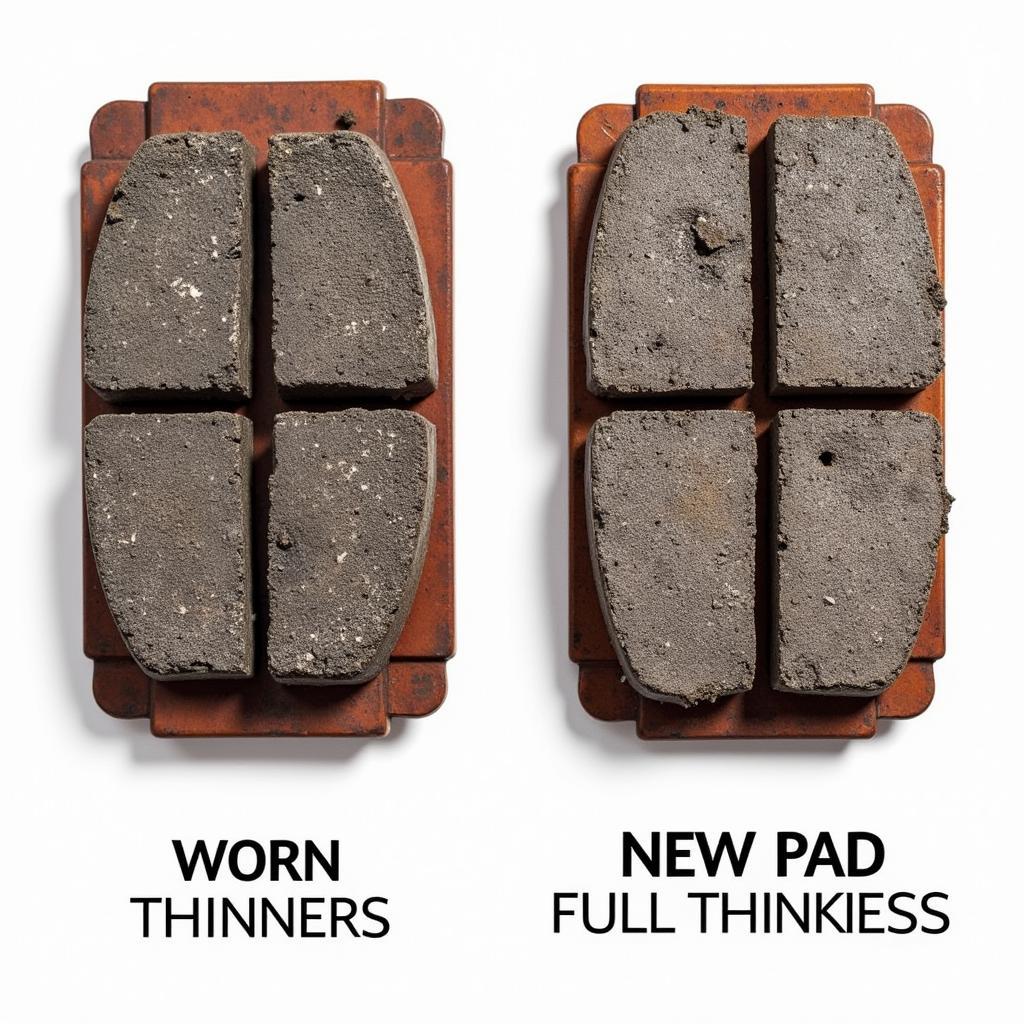 Comparison of Worn Brake Pads with New Brake Pads
Comparison of Worn Brake Pads with New Brake Pads
What Happens if I Ignore the Warning Light?
Ignoring the warning light can lead to metal-on-metal contact between the brake backing plate and the rotor. This can cause severe damage to the rotors, requiring expensive resurfacing or replacement. In extreme cases, it can even lead to brake failure, putting you and others at risk.
What to Do When the Light Comes On
When you see the brake pad warning light, it’s crucial to take action promptly. Here’s a step-by-step guide:
- Schedule an inspection: Contact a qualified mechanic as soon as possible to have your brakes inspected. Need to stream music from your phone? Learn how to play iPhone music on car radio Bluetooth.
- Avoid hard braking: Until your brakes are inspected, avoid sudden stops and hard braking to minimize further wear.
- Be prepared for replacement: In most cases, the warning light indicates the need for new brake pads. Be prepared for the cost of parts and labor. Connecting your phone via Bluetooth can improve your driving experience. Explore options for an iPhone Bluetooth car radio.
“Regular brake inspections are a small price to pay for peace of mind,” says John Smith, a certified automotive technician with over 20 years of experience. “Don’t wait until you hear grinding or feel a significant decrease in braking performance. By then, the damage might already be done.”
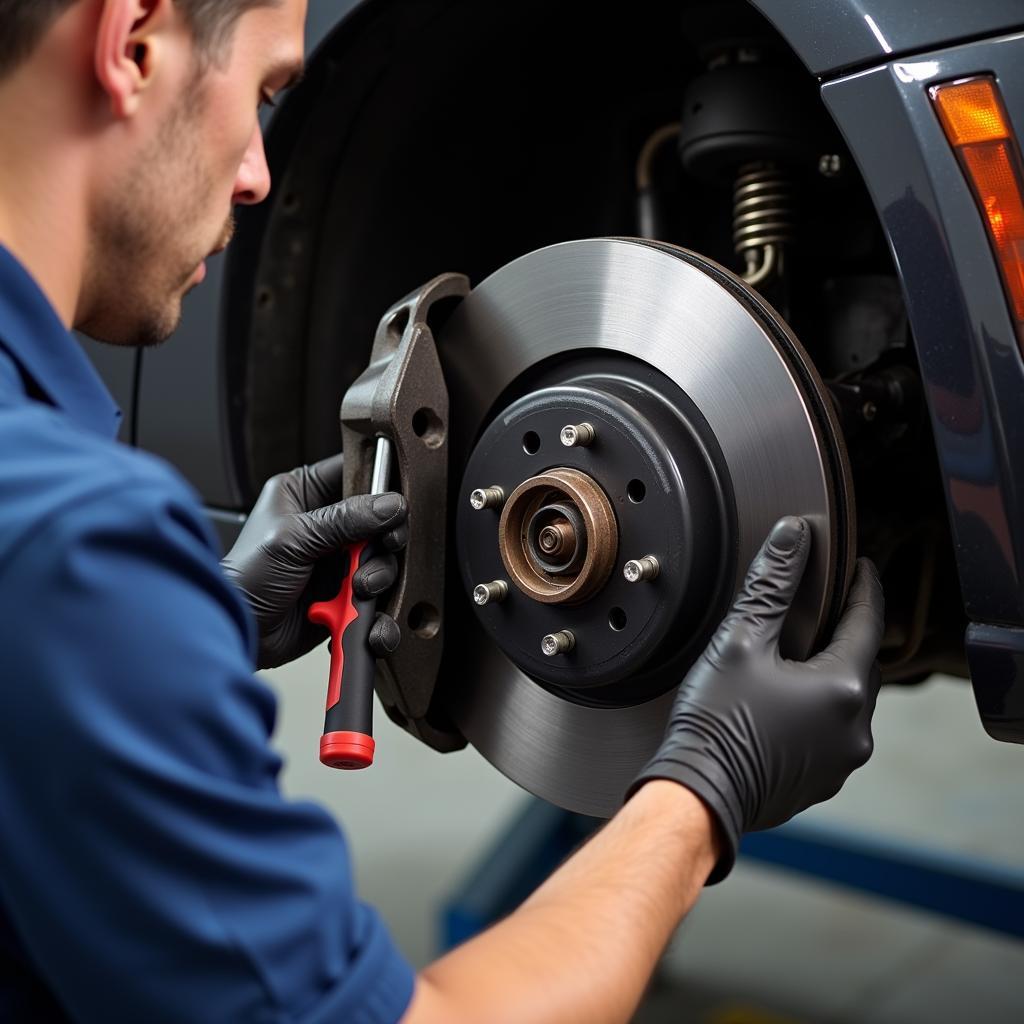 Mechanic Inspecting Car Brakes
Mechanic Inspecting Car Brakes
Conclusion
The brake pad warning light is a serious warning that shouldn’t be ignored. While you might have a little time left before your brakes are completely worn, driving with the light on is risky. Prompt inspection and timely replacement of your brake pads can save you money and ensure your safety on the road. Remember, maintaining your brakes is crucial for safe and reliable driving. Need to connect your phone to your car’s radio? Check out this guide on how to connect phone Bluetooth car radio.
FAQ
- What does the brake pad warning light look like? It typically resembles a circle with parentheses around it, sometimes with an exclamation point inside.
- Can I replace my brake pads myself? While possible, it’s recommended to have a qualified mechanic perform the replacement to ensure proper installation.
- How much does it cost to replace brake pads? The cost varies depending on your vehicle make and model, but expect to pay a few hundred dollars for parts and labor.
- How often should I have my brakes inspected? A good rule of thumb is to have your brakes inspected at least once a year or every 12,000 miles.
- What other signs indicate worn brake pads? Squealing or grinding noises, vibration in the brake pedal, and a longer stopping distance are all signs of worn brake pads.
- Can worn brake pads damage my rotors? Yes, driving with worn brake pads can severely damage your rotors, leading to costly repairs.
- Is it safe to drive with the brake pad warning light on? It’s not safe to drive with the warning light illuminated. Have your brakes inspected immediately to avoid further damage and potential brake failure.

